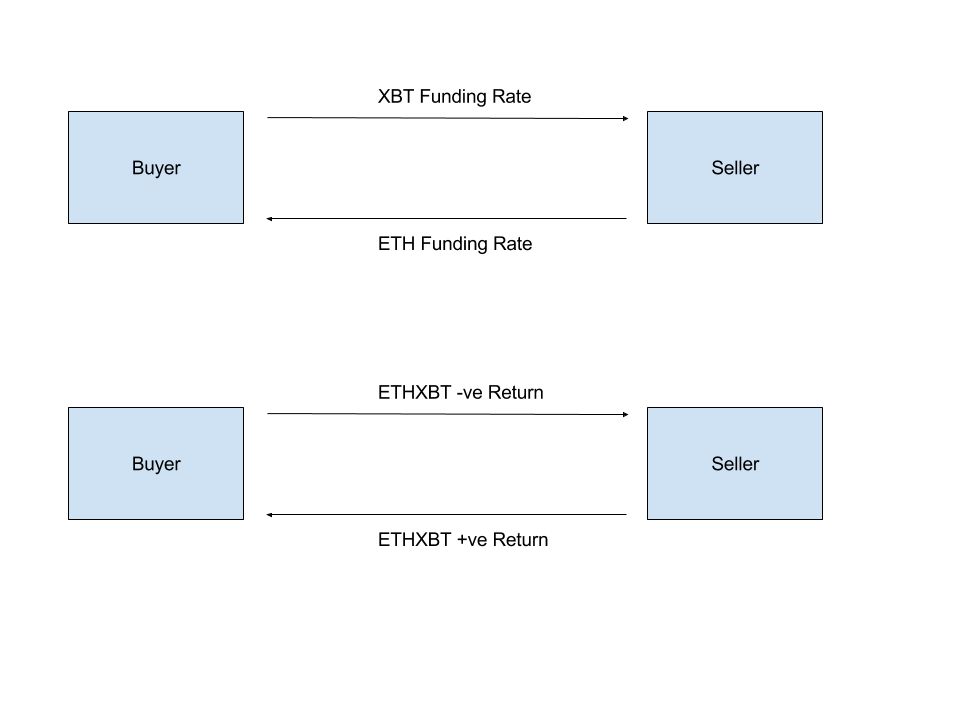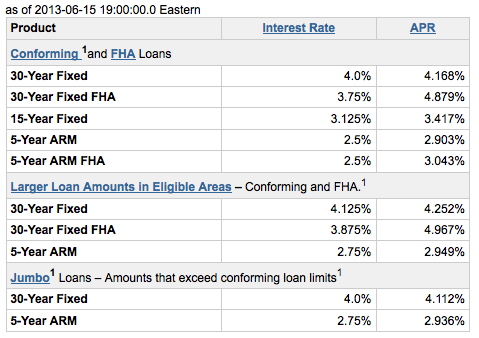Contents:


Efiling Income Tax Returns is made easy with Clear platform. Just upload your form 16, claim your deductions and get your acknowledgment number online. You can efile income tax return on your income from salary, house property, capital gains, business & profession and income from other sources. Further you can also file TDS returns, generate Form-16, use our Tax Calculator software, claim HRA, check refund status and generate rent receipts for Income Tax Filing. Curated newsletters on markets, personal finance, policy & politics, start-ups, technology, and more.

So, SBI chief would decrease the interest rates on car,home,bike,business loans to seduce more customers. We already discussed this- SBI has more money so it can cut down interest rates and suffer temporary reduction in profit, in order to seduce more customers So once SBI has reduced the interest rates, other banks will need to reduce their interest rates, to stay in the competition. CRR includes cash reserves only, but SLR includes liquid assets such as gold, bonds, and securities as well. Classification and valuation of approved securities shall be in accordance with the instructions contained in our Master Circular on Prudential Norms for Classification, Valuation and Operation of Investment Portfolio by banks, as amended from time to time. Indian bond yields steady as investors eye fresh triggersIndian government bond yields remained mostly unchanged as traders refrained from making big moves.
RBI may cut rate by 25 bps, but CRR reduction unlikely
A) In the case of a Regional Rural Bank, any loan taken by such bank from its sponsor bank. This sub clause shall not apply to the admission of a co-operative bank as a member by reason of such co-operative bank subscribing to the share capital of such co-operative society out of funds provided by the State Government for the purpose. Xv) ‘Fortnight’ means the period from Saturday, following a reporting Friday, to the second following Friday, both days inclusive. As opposed to CRR, in the Statutory Liquidity Ratio, the bank does earn some interest from the government security they invest in.
The Reserve Bank of India in its first bi-monthly monetary policy committee meeting for the current fiscal year announced no change in the repo rate and other key policy rate. However, the question is it the pause on the current rate hike or will the central bank hike the repo rate again in this financial year. The percentage of deposits which commercial banks are required to keep as cash according to the directions of the central bank.
Why is RRR or Reverse Repo Rate lower than RR/Repo Rate?
In cases of shortfall in maintenance of CRR on average basis during a fortnight, penal interest will be recovered as envisaged in sub-section of Section 42 of Reserve Bank of India Act, 1934. The liabilities mentioned under Section 9 of these Directions shall not form part of liabilities for the purpose of SLR also. Liabilities to the banking system as computed under clause of explanation to section 42 of the RBI Act, 1934.
Cash Reserve Ratio: A non-performing asset for banks? – Moneylife
Cash Reserve Ratio: A non-performing asset for banks?.
Posted: Mon, 27 Aug 2012 07:00:00 GMT [source]
Against security consisting of gold coins, bullion, foreign securities & other approved securities. In USA, there is graded system i.e. small banks don’t need to maintain any CRR with their central bank. While “big” banks would need to maintain CRR Deposit according to their size. Therefore, RBI will increase/decrease these CRR, SLR and Repo Rates according to the situation in order to adjust the money supply in market and thus control inflation. Download the digibank by DBS app to virtually apply for a loan and enjoy reasonable interest rates and easy EMI options.
The RBI pays interest on CRR balance of a bank at…
Banks are required to furnish the particulars such as date, amount, percentage, reason for default in maintenance of requisite CRR and also action taken to avoid recurrence of such default. All Primary Co-operative Banks (scheduled and non-scheduled) should furnish the information w.r.t. valuation of securities for SLR, format for which is given in Annex 6. Information in the format may be furnished as an Annex, to return in Form I, only to the Regional Office concerned of Department of Supervision. The monthly Return should contain information of the fortnights following in the respective months. Whenever there are wide variations between the sources and uses of funds as being reported in the fortnightly Return and the variations exceed 20 per cent, the banks concerned should give reasons therefor in the Return.
A) Any advance taken by a rbi pays interest on crr balances of banks at Cooperative Bank from State Government, National Co-operative Development Corporation, State Cooperative bank of the State concerned or District Central Co-operative Bank of the district concerned as also any advance or credit arrangement drawn or availed of against approved securities. Further, RBI has also decided to exempt those banks from payment of penal interest which have breached the statutory minimum CRR level of 3 per cent from June 22, 2006 to March 2, 2007 on account of CRR exemptions reckoned for computation of demand and time liabilities for CRR. Slowdown in the economy is due to policy inaction on the part of the government, but the banks are facing the music of increased non-performing loans and higher provisioning on restructured advances. Instead of giving the banks powers to change the management of badly managed units, so as to bring down the restructured advances, the government is busy issuing instructions to public sector banks as to how to manage their liabilities, which, in fact, is the domain of the RBI. In case of Local Area Banks, the banks shall be liable to pay to the Reserve Bank, penal interest as envisaged in sub-section Section 18 of B.R.
So SLR helps in the government’s debt management program and RBI’s monetary policy as well. State Development Loans are issued from time to time under their market borrowing program. CAs, experts and businesses can get GST ready with Clear GST software & certification course. Our GST Software helps CAs, tax experts & business to manage returns & invoices in an easy manner. Our Goods & Services Tax course includes tutorial videos, guides and expert assistance to help you in mastering Goods and Services Tax. Clear can also help you in getting your business registered for Goods & Services Tax Law.
Most of the central banks in developed countries have dispensed with the system of CRR and have been using the tool of open market operations to control inflation. While countries like the UK, Canada, Sweden, Australia and New Zealand have zero reserve requirements, USA has a graded system of reserve requirements depending upon the size of the bank. It starts from zero percent to 10%, but the critical point is that this reserve is not on the total demand and time liabilities of the bank, but on dollar balances only on net transaction accounts, i.e. only on checking accounts, which form a much smaller part of the total liabilities of the bank. And unlike in India, the entire cash held by the banks in their own vaults is considered as reserve and only the balance amount is required to be deposited with the Federal Reserve—the central bank of the US. Surprisingly, Federal Reserve pays interest on the reserve balances maintained with it including on the excess balances, and the current rate of interest paid is 0.25% p.a., which is equivalent to their discount rate at present. Repo rate is the rate at which commercial banks borrow money from the central bank of a country when they are in the need of funds.
Low-cost carrier Go First, which has filed for voluntary insolvency, has sued Pratt & Whitney for damages in the US. The government is likely to hold discussions with Vedanta informally on a possible stock market listing of Balco before a firm proposal is made to the aluminium company’s board, said people aware of the development. India’s benchmark indices dropped 1% on Friday, wiping out the previous day’s gains, as lenders — led by HDFC group stocks — led the selloff.
Till 2007, RBI was required to pay interest on the CRR balances kept by SCBs, but by an amendment to the RBI Act, this provision to pay interest was withdrawn, and hence the RBI does not pay any interest on the CRR balances maintained with it from 31 March 2007. Providing relief to bankers whose profitability was under pressure due to the tightening of liquidity in the system, the Reserve Bank of India on Friday announced it would resume the payment of interest to eligible balances of cash reserve ratio maintained by scheduled banks with the regulator. To securing the monetary stability in the country, RBI has prescribed the maintenance of CRR for Scheduled Commercial Banks without any floor or ceiling rate in terms of Section 42 of the RBI Act, 1934. The CRR is prescribed at 4.00 per cent of a bank’s total of Demand and Time Liabilities. All SCBs are required to maintain minimum CRR balances up to 95 per cent of the average daily required reserves for a reporting fortnight on all days of the fortnight. The Reserve Bank does not pay any interest on the CRR balances maintained by SCBs.

Statutory Liquidity Ratio is expressed in percentage terms. SLR is calculated as a percentage of all the deposits held by the bank. Another way to define the SLR meaning is the ratio of a bank’s liquid assets to its net demand and time liabilities. CRR serves as a safety net for customers, ensuring that banks have enough liquidity to handle a surge in demand for funds through withdrawals.
The government was pushing the central bank to pay interest on CRR balance as it felt consumers would benefit with banks passing on some of their interest income to their borrowers. RBI had been resisting this as it feels any interest paid on CRR reduces its effectiveness as a monetary tool. Under the law, banks have to keep 6% of their deposit liabilities with RBI as a cash reserve. However, the minimum cash balance to be kept with RBI is 3% and banks used to earn interest over and above this.
Every sector of the economy is affected by changes made to these interest rates. Most banks have an RRLR or repo rate linked lending rate and when the repo rate is revised, banks are directed by RBI to change the interest rate applicable on various loans accordingly. Generally, when the repo rate is reduced, the interest rate charged on home loans, EMIs etc. also reduces, making it easier for customers to avail loans or borrow from banks. Though changes made to repo rates are meant to affect the interest rate of commercial banks, the actual rates applicable for the customer may vary from bank to bank and is also dependent on various factors including the terms of the loan such as the amount being borrowed, tenure of repayment, etc.
Vii) ‘Banking System’ or ’Banks’ wherever it appears in the prescribed Form A/Form B Return shall mean the banks and any other financial institutions referred to in sub-clause to of the Explanation below Section 42 and of the Reserve Bank of India Act, 1934. As the chief monetary authority of our economy, RBI is responsible for handling cash flows, inflation levels, and price levels in the country. While the main objective of monetary policy tools like CRR and SLR is to maintain liquidity, there are multiple objectives that these tools serve as well. Dated securities of the Government of India are issued from time to time under the market borrowing program and the Market Stabilisation Scheme. RBI stopped paying interest on CRR from June last year following the amendment of the Reserve Bank of India Act abolishing the 3% minimum cash balance floor, as well as the provision for interest payment on the remaining CRR. However, on 9 January, while formally notifying the amendment, the Central government dropped the relevant section of the Act that deals with CRR.
What are the objectives of Cash Reserve Ratio?
The main purpose of CRR is to protect the risk of the bank’s depositors to an extent and to ensure that a bank maintains some funds in liquid form. Banks don’t earn any interest on the funds deposited with RBI. It is an obligatory reserve that commercial banks must maintain. Commercial banks may maintain this reserve requirement in the form of approved securities per a specific percentage of the net demand and time liabilities. Reverse Repo Rate is lower than Repo Rate because of the simple reason that loans attract higher interest than deposits. Individuals usually pay higher interest on loans than what they earn through savings or current deposits.
Using repo, banks raise the necessary capital to increase their lending capacity. This ensures liquidity for the bank and proper cash flow into the market. But, in the case of inflation, RBI uses reverse repo to absorb funds from the market to regulate the lending capabilities of commercial banks. Repo rate is the rate of interest at which commercial banks in India borrow money from the Reserve Bank of India. Commercial banks are required to deposit securities such as government bonds or treasury bills as collateral to avail these loans from the central bank of the country. These are generally short term loans that banks take when there is a shortage of cash.Just like the repo rate, RBI also has a reverse repo rate which is the rate that the RBI pays to the commercial banks when they deposit their excess funds in the central bank.
Is your money safe with scam-hit Indian banks? – Zee Business
Is your money safe with scam-hit Indian banks?.
Posted: Tue, 06 Mar 2018 08:00:00 GMT [source]
An Increase in CRR would decrease the liquidity from the market. Interestingly, USA’s RBI pays interest on the CRR deposits, while India’s RBI doesn’t pay any interest on CRR deposits. But in 2007, Government amended the RBI act so now RBI doesn’t have to pay any interest on the CRR deposits. Nowadays RBI doesn’t touch Bank rate much and mostly relies on Repo rate to control the money supply. It is a percentage of money that a bank has to keep with the RBI.
- Repo and reverse repo rates form a part of the liquidity adjustment facility.
- Loans/borrowings from abroad by banks in India shall be reckoned as ‘liabilities to others’ and shall be subject to reserve requirements.
- RBI pledges collateral of government securities and banks park their excess funds at RBI.
Every scheduled bank, small finance bank and payments bank shall maintain minimum CRR of not less than ninety per cent of the required CRR on all days during the reporting fortnight, in such a manner that the average of CRR maintained daily shall not be less than the CRR prescribed by the Reserve Bank. Include balances with banks in current account, balances with banks and notified financial institutions in other accounts, funds made available to banking system by way of loans or deposits repayable at call or short notice of a fortnight or less and loans other than money at call and short notice made available to the banking system. Cash Reserve Ratio is a specified minimum fraction of the total deposits of customers, which commercial banks have to hold as reserves either in cash or as deposits with the central bank.